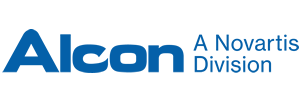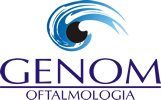
Sessão de Encontro com o Autor – Tema Livre (Pôster)
Código
P021
Área Técnica
Córnea
Instituição onde foi realizado o trabalho
- Principal: Irmandade da Santa Casa de Misericórdia de São Paulo
Autores
- GUSTAVO COELHO CAIADO (Interesse Comercial: NÃO)
- Richard Yudi Hida (Interesse Comercial: NÃO)
- Lais Yumi Sakano (Interesse Comercial: NÃO)
- Fabio Ursulino Carvalho (Interesse Comercial: NÃO)
- Ivan Corso Teixeira (Interesse Comercial: NÃO)
- Ricardo Holzchuh (Interesse Comercial: NÃO)
- Fernando Cesar Abib (Interesse Comercial: NÃO)
Título
CONTACT OR NON-CONTACT CORNEAL SPECULAR MICROSCOPES: WHICH SPECULAR MICROSCOPE IS SUGGESTED FOR EACH PATIENT?
Objetivo
The purpose of this study is to describe the best clinical indications to perform NC-CSMe or Contact Corneal Specular Microscope (C-CSMe). As secondary purpose, a routine algorithm will be suggested to guide the readers for the best device for each clinical situation.
Método
Retrospective cross-sectional study including database of 650 patients (418 female) submitted to SM was performed in 2016. The study was performed at Clínica de Olhos Prof. Dr. Fernando Abib (Curitiba, Brazil) and Santa Casa de Misericórdia de São Paulo (São Paulo, Brazil). Absolute number of patients that performed NC-CSMe (CSO, Italy) or C-CSMe (BioOptics Bambi 2500, USA) was registered to analyze the best clinical indication for each ophthalmic situation. All patients were submitted to NC-CSMe and then C-CSMe was performed when specular image was not possible. The reasons for impossibility of NC-CSMe were unclear image, impossibility of image capturing, unacceptable number of cells according to Reliability Index of the Cells Analyzer USA Patent software (Technicall, Brazil), or patients that did not authorize the exam. Patient’s disease was distributed according to the CSMe used for each clinical situation. According to results, a routine algorithm will be suggested for the direct indication of C-CSMe.
Resultado
Figure 1 shows the distribution of patient’s disease and profile that performed NC-CSMe and C-CSMe. For corneal diseases, in general, C-CSMe was more convenient (130) than NC-CSMe (43). For refractive situations, NC- CSMe was appropriate in most cases. As for NC-CSMe, it was more frequently possible for image capturing for contact lens users (25.69%). As for C-CSMe, the most frequent was Fuchs Endothelial Dystrophy (11.23%).
Conclusão
The best clinical indications for NC-CSMe were normal corneas and contact lens users. The best clinical indication for C-CSMe was for corneal diseases. A reviewed routine algorithm is suggested for the readers in Figure 2.















